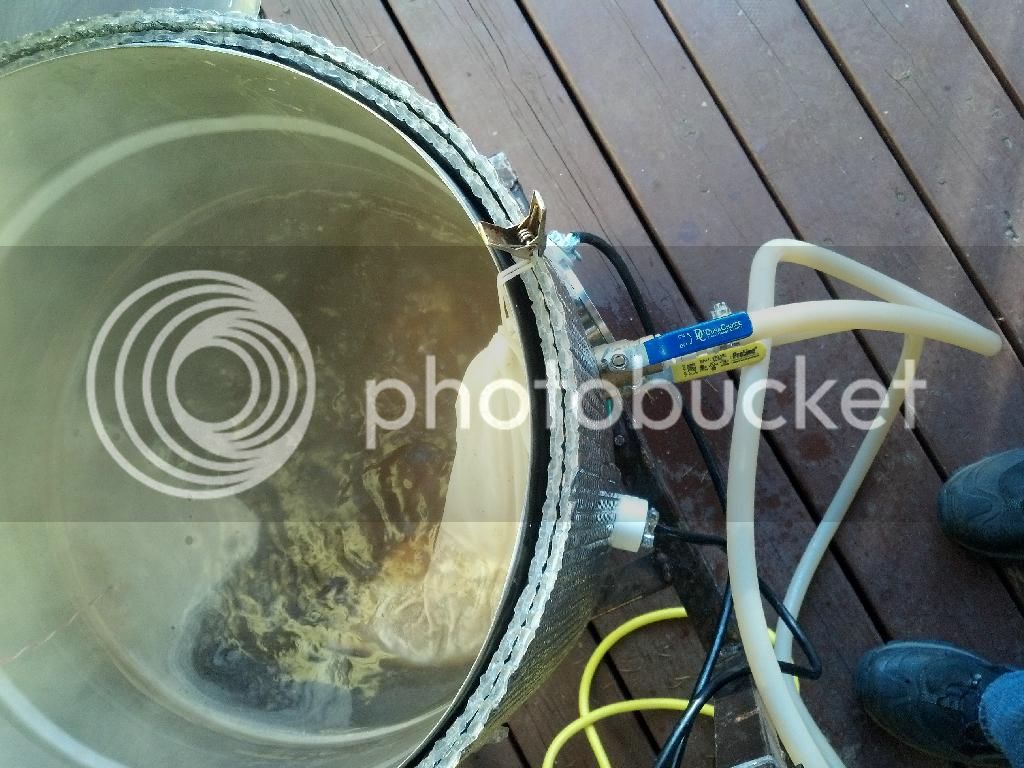jybingbrew
Well-Known Member
I'm trying to troubleshoot why my eBIAB system can't get a rolling boil for about 4 gallons of water. I'm using a ~14 in wide pot with a 2000W element plugged into 110v eBIAB build found on this site.
https://www.homebrewtalk.com/f170/110v-recirculating-ebiab-2-5-gallon-batches-341219/
I've insulated the kettle, but still can't get anything other than a small light boil.
I knew something was up when I couldn't get a 15 amp circuit to trip (as a test), since a 2000W should be drawing more than 15 amps -- so I decided to test a few things.
When I test the voltage out of the back of the control box it is 122.8 Volts. When I test it at the element itself, it drops all the way to 107 Volts when it's on. The resistance of the element is 7.7 ohms.
If i'm calculating properly, i'm only getting 1500W of power our of my 2000W element because of this.
I would expect some level of voltage drop while it's powered and using the SSR, but isn't that quite a steep drop? Or is this normal? The cord for the element is 14awg so I don't think that is limiting the current.
Out of ideas, so any help would be appreciated!
https://www.homebrewtalk.com/f170/110v-recirculating-ebiab-2-5-gallon-batches-341219/
I've insulated the kettle, but still can't get anything other than a small light boil.
I knew something was up when I couldn't get a 15 amp circuit to trip (as a test), since a 2000W should be drawing more than 15 amps -- so I decided to test a few things.
When I test the voltage out of the back of the control box it is 122.8 Volts. When I test it at the element itself, it drops all the way to 107 Volts when it's on. The resistance of the element is 7.7 ohms.
If i'm calculating properly, i'm only getting 1500W of power our of my 2000W element because of this.
I would expect some level of voltage drop while it's powered and using the SSR, but isn't that quite a steep drop? Or is this normal? The cord for the element is 14awg so I don't think that is limiting the current.
Out of ideas, so any help would be appreciated!


 see if that helps at all.
see if that helps at all. 
